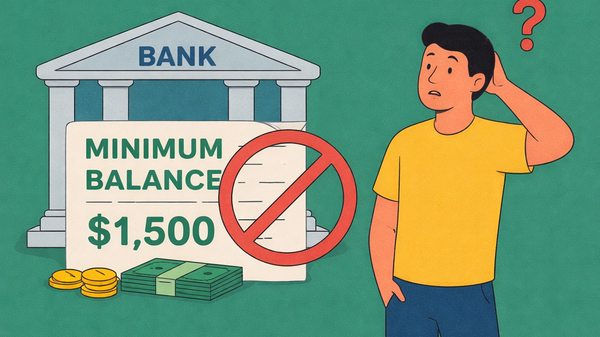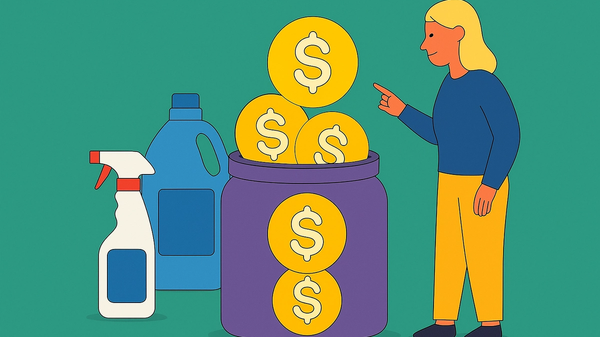Highlights:
- How to get the most money from the government for your child’s education
- See the yearly breakdown of how much to invest for each strategy
- Why you might be better off by skipping the government’s contribution
If you’re saving for your child’s education, the Registered Education Savings Plan (RESP) is exactly what you’re looking for.
It’s one of the most powerful tools Canadian parents can use, thanks to tax-free investment growth and free money from the government.
Surprisingly, “You can actually get more if you skip the government grants” my friend pointed out after I showed her the numbers.
In this article we’ll cover 3 different strategies to make the most of the RESP!
How it works
Money from the RESP can be used to pay for eligible education expenses like rent, tuition, books, tools, and transportation.
In total you can contribute up to $50,000 per child.
By contributing a minimum of $2,500 a year, the federal government will match 20% of your contributions (up to $500 per year) through the Canada Education Savings Grant (CESG).
If you follow the annual contribution schedule, you can receive the full $7,200 in government grants.
Free money from the government is great
But depending on your priorities and cash flow, there might be smarter ways to invest for your child’s future.
Compound interest might even benefit you more than the government grants do.
We’ll break down different ways to use the RESP to your benefit.
Keep this in mind
For these examples we’re assuming you’re starting right after your child is born, so you have the full 18 years before post-secondary begins.
If your child is older or you start later, the core principles apply but the numbers will look different.
Also, it’s a good idea to start shifting your RESP investments to something more conservative a few years before your child starts post-secondary. That way, you’re not forced to sell during a market dip when you need the funds.
For simplicity, the projections in this article have been calculated using an 8% return over 15 years.
Strategy 1: Prioritize government grants
The goal of this strategy is to get the most government money with a minimal yearly investment.
This is the most common and cost-efficient strategy for many families.
The Canadian government offers a 20% match on the first $2,500 contributed each year per child — up to a maximum of $500 annually and $7,200 total over the lifetime of the RESP.
To fully capture that $500 match each year, you need to contribute a minimum of $2,500 annually. You can make this easy by setting up an automatic monthly contribution of $209.
Over 14.4 years, this gets you the full $7,200 Canada Education Savings Grant (CESG).
In total, you’ll contribute $36,000 and get $7,200 in free money.
This strategy is a good fit if:
• You want steady contributions over time
• You’re not ready to front-load large amounts
• Your child is still young and you’ve got time
The year-by-year breakdown
The results
Based on this contribution plan and an 8% annual return, this RESP could grow to approximately $86,029 by the end of year 15.
Strategy 2: Prioritize government grants and investment gains
The goal of this strategy is to frontload your investments to give them more time to grow, while maximising your government contributions.
This gives you the best of both worlds: the benefits of compounding while getting the full CESG ($7,200 total).
Here’s one way to do it:
• Contribute $16,500 in the first year
• Then contribute $2,500 annually for the next 13 years, and $1000 in the last year
This way you’ll reach the $50,000 lifetime limit and give your money a head start in the market.
You’ll receive the maximum CESG, and you’ll likely end up with a bigger RESP balance thanks to the extra years of growth.
Or make bigger contributions over a few years:
If you can’t make a large contribution in the first year, you can still front-load in smaller steps.
For example, you can contribute $5,000 for the first few years instead of $2,500. This puts more in the market early on, without investing so much at once.
This strategy is a good fit if:
• You want to be eligible for full government grants
• You have extra room in your budget
• You’re looking for a good balance between grant money and compounding growth
The year-by-year breakdown
Here’s how it could look if you make a large contribution in the first year, then collect the full government grant over the next 14 years.
The results
Based on this contribution plan and an 8% annual return, this RESP could grow to approximately $130,000 by the end of year 15.
Strategy 3: Prioritize investment gains
The goal of this strategy is to maximize growth in the market by contributing the full $50,000 in the first year.
This gives your money the most time to grow tax-free.
The tradeoff is that you’ll only receive $500 in CESG since you won’t be making an annual contribution that triggers more grant money.
Or make larger contributions for the first few years
This isn’t “all or nothing” - you don’t have to do it all in the first year.
You can make several large contributions over the first few years up to the maximum. You’ll also get government grants for each year you make a large contribution.
For example, you could contribute $10,000 a year for 5 years.
This strategy is a good fit if:
• You want to maximize your RESP growth potential
• You have the full amount ready to invest early
• You want to simplify by not needing to track annual contributions
The year-by-year breakdown
The results
Based on this contribution plan and an 8% annual return, this RESP could grow to approximately $160,000 by the end of year 15.
The 1 thing you should always do
No matter which path you choose, these numbers only work if you invest - ideally, in balanced low-cost ETFs.
Compound growth over time will add tens of thousands to your child’s education fund.
Passiv makes it easy to manage your RESP investments by keeping your portfolio balanced.
It helps maximize gains by making it simple to get cash invested at the click of a button.
Plus, you can manage all your household investments from one easy-to-read dashboard!
Click here to get the “Forever Free” plan.
Start using Passiv!


